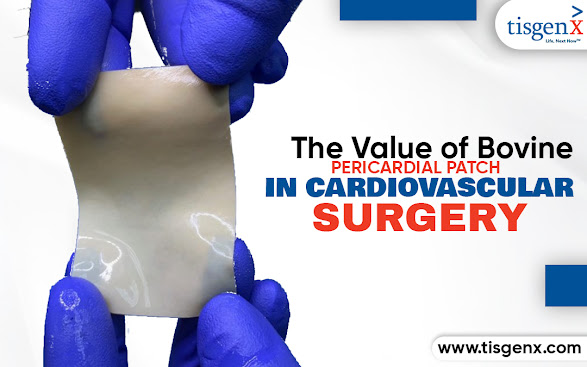The Value of Bovine Pericardial Patch in Cardiovascular Surgery
Medical
innovation and technological advancements are continuously changing the face of
cardiovascular surgery, opening up new avenues of treatment and bettering
patient outcomes. Among these innovations, bovine pericardial patches have been
more popular in the last several years. This Bovine
Pericardial Patch, made from cow pericardium, is a
great resource for fixing and rebuilding heart tissues. Bovine pericardial
patches are a valuable tool in cardiovascular surgery, and this article will
discuss their use, characteristics, and advantages.
Getting
to Know Bovine Pericardial Patches
Biologists
have found biocompatible materials in the outer layer of the pericardium, a sac
that surrounds the heart, which they call bovine pericardial patches. A
multipurpose and long-lasting patch made from meticulously processed and
sterilised cow pericardium is utilised in a range of cardiovascular procedures.
The variety of sizes and shapes of these patches allows surgeons to customise
their use based on each patient's unique needs and anatomy.
Cardiovascular
Surgery Applications
When
it comes to cardiovascular surgery, bovine pericardial patches are a lifesaver.
Patch angioplasty for congenital heart defects, closure of atriotomy or
ventriculotomy incisions during cardiac surgery, and the closure of septal
defects (e.g., atrial septal defect or ventricular septal defect) are common
uses for this technique. Vascular surgeons also use these patches to fix
arteriotomies and arterial aneurysms.
Distinct
Qualities and Benefits
When
it comes to cardiovascular surgery, a bovine pericardium patch is
ideal due to its many desirable characteristics. To begin with, they have low
immunogenicity and are well-tolerated by the body because they are
biocompatible. This improves long-term results by lowering the risk of
rejection and increasing tissue integration. Bovine pericardial patches are an
excellent choice for reinforcing injured or weak tissues because they are
long-lasting and tear-proof. Surgical procedures benefit from their pliability
and flexibility, which make them easy to handle and place precisely.
Patient
Advantages
The
utilisation of a bovine
pericardium patch provides numerous advantages
for patients undergoing cardiac surgery. Reducing the likelihood of problems
like leaks, tears, or recurring defects, these patches effectively repair and
reinforce cardiac and vascular structures. Because they are biocompatible, they
won't react negatively with the patient's tissues and won't cause any problems
after surgery. In addition, patients may have a better quality of life and a
faster recovery when they use bovine pericardial patches.
Perks
for Medical Professionals
The Bovine
Pericardial Patch offers a variety of benefits to
surgeons, including the ease with which they are used, their adaptability, and
their reliability. They can be easily manipulated in tight and difficult
surgical settings, and they can be fenestrated for simplified use and easy suturing
into position. Surgeons have numerous shapes and sizes from which to choose so
that they can select the patch that is the most appropriate for the specific
patient’s anatomy, thus ensuring a perfect, nonporous fit. In that way, bovine
pericardial patches make it possible for surgeons to produce memorable results,
as they can count on secure and long-lasting repairs with durable, strong
patches.
Conclusion
Because a Bovine Pericardial Patch is safe, effective, and adaptable, cardiovascular surgeons now use them to repair and rebuild vascular and cardiac tissues. Their biocompatibility, longevity, and usability make them ideal for many cardiovascular procedures. As medical technology advances, bovine pericardial patches will likely remain a cornerstone of modern cardiovascular surgery, improving patient outcomes and care. Tisgenx should advise you.




Comments
Post a Comment